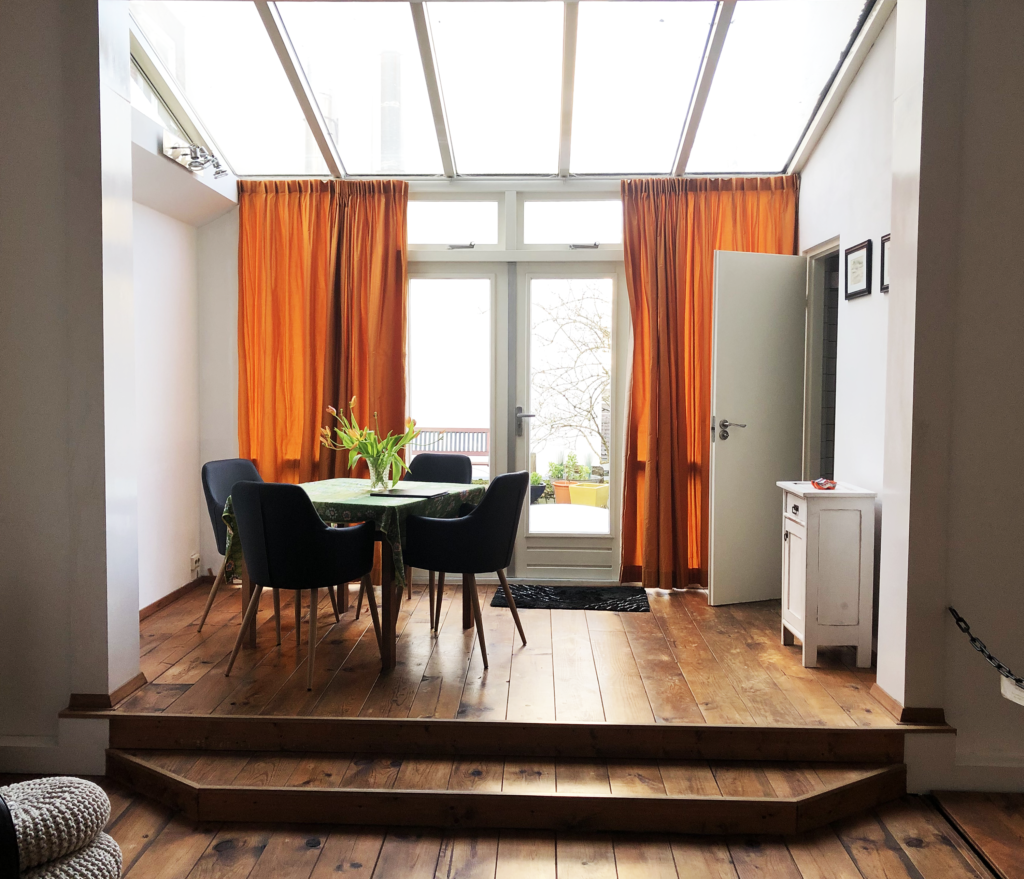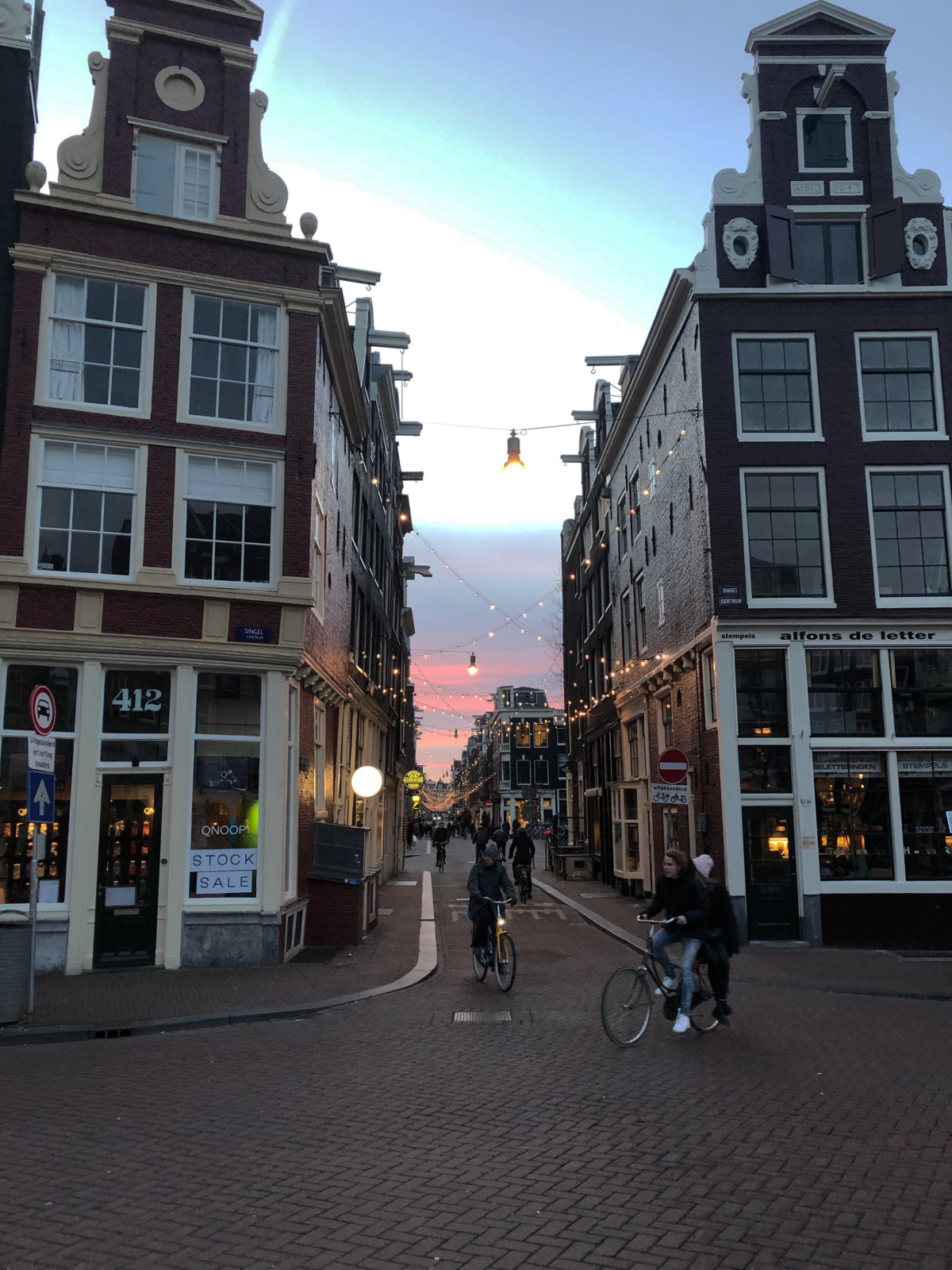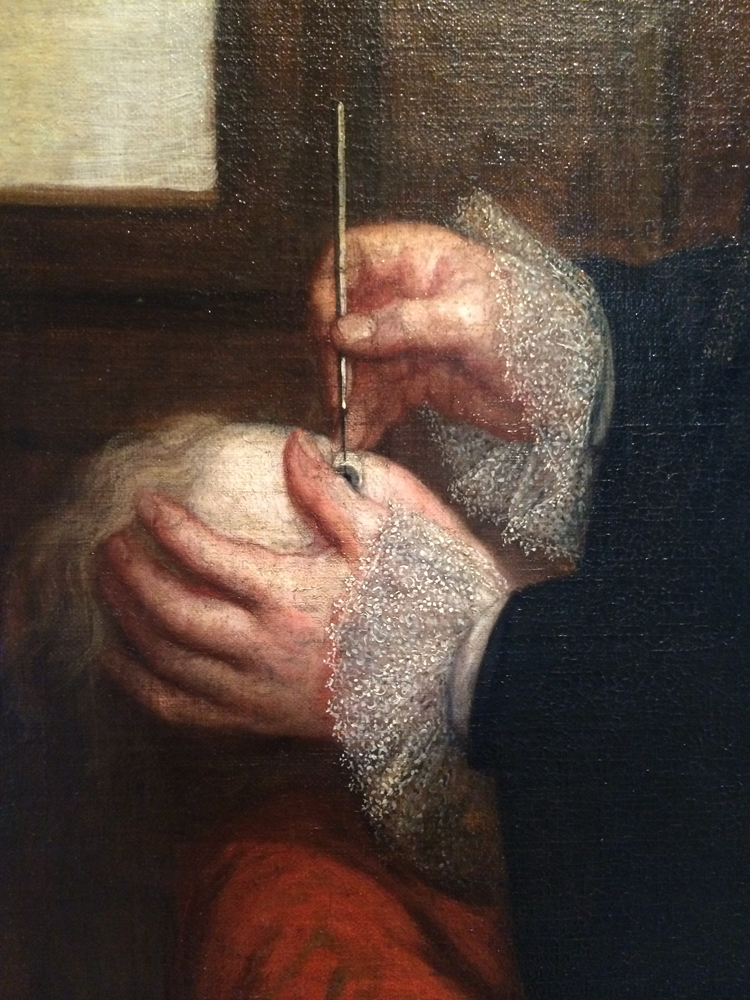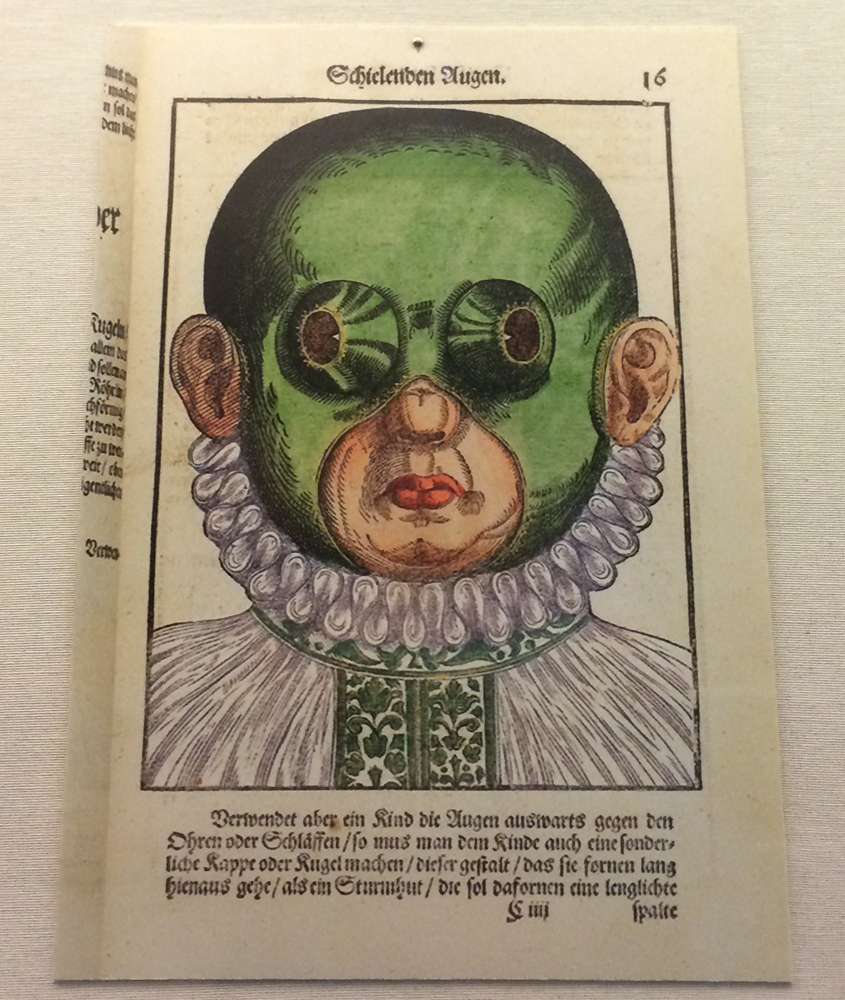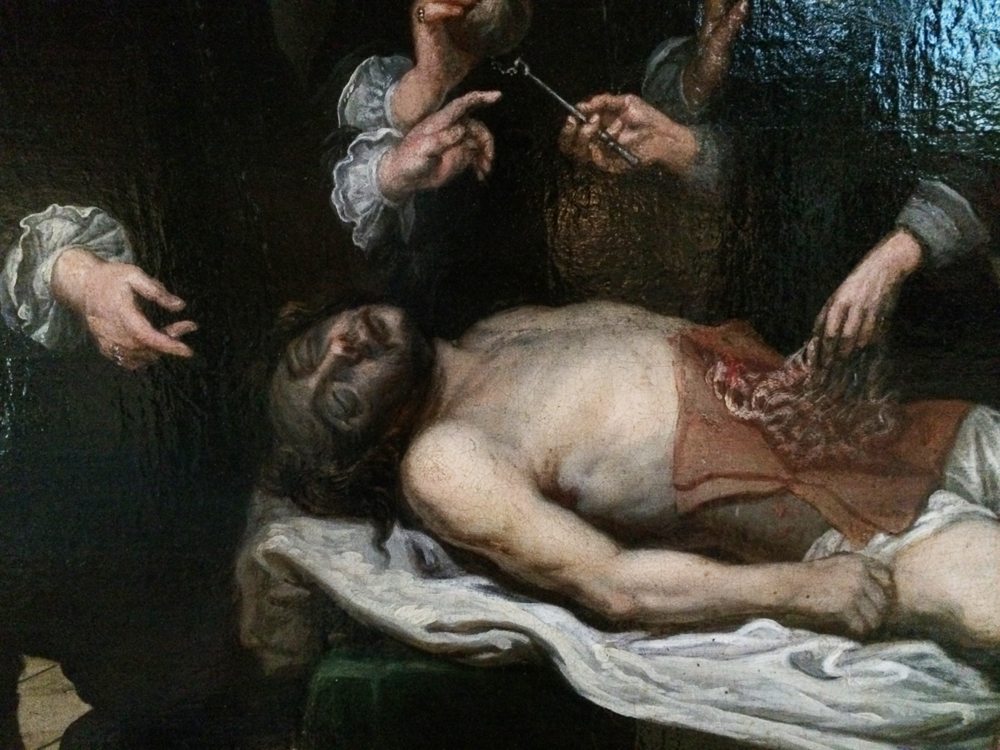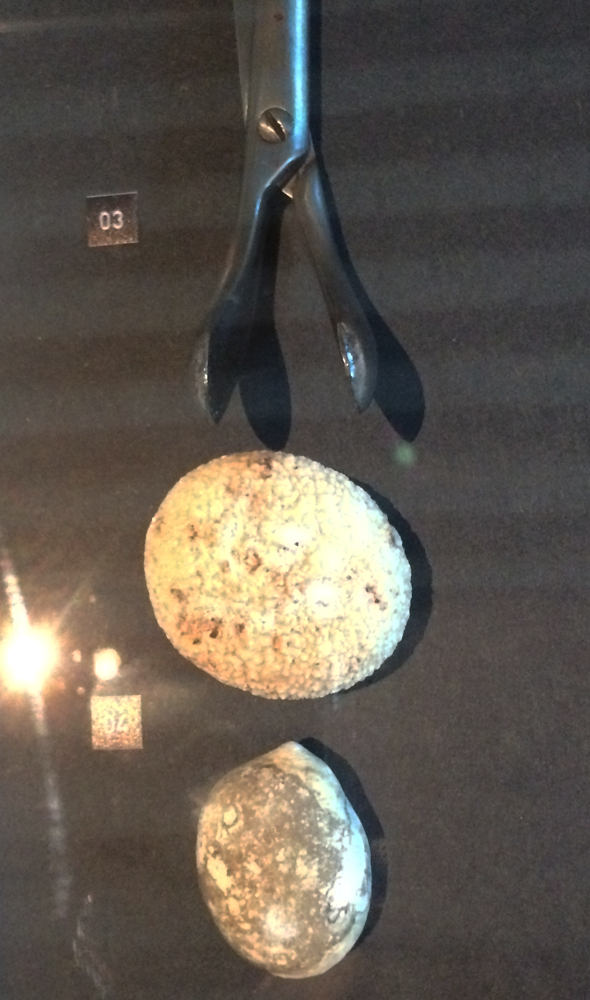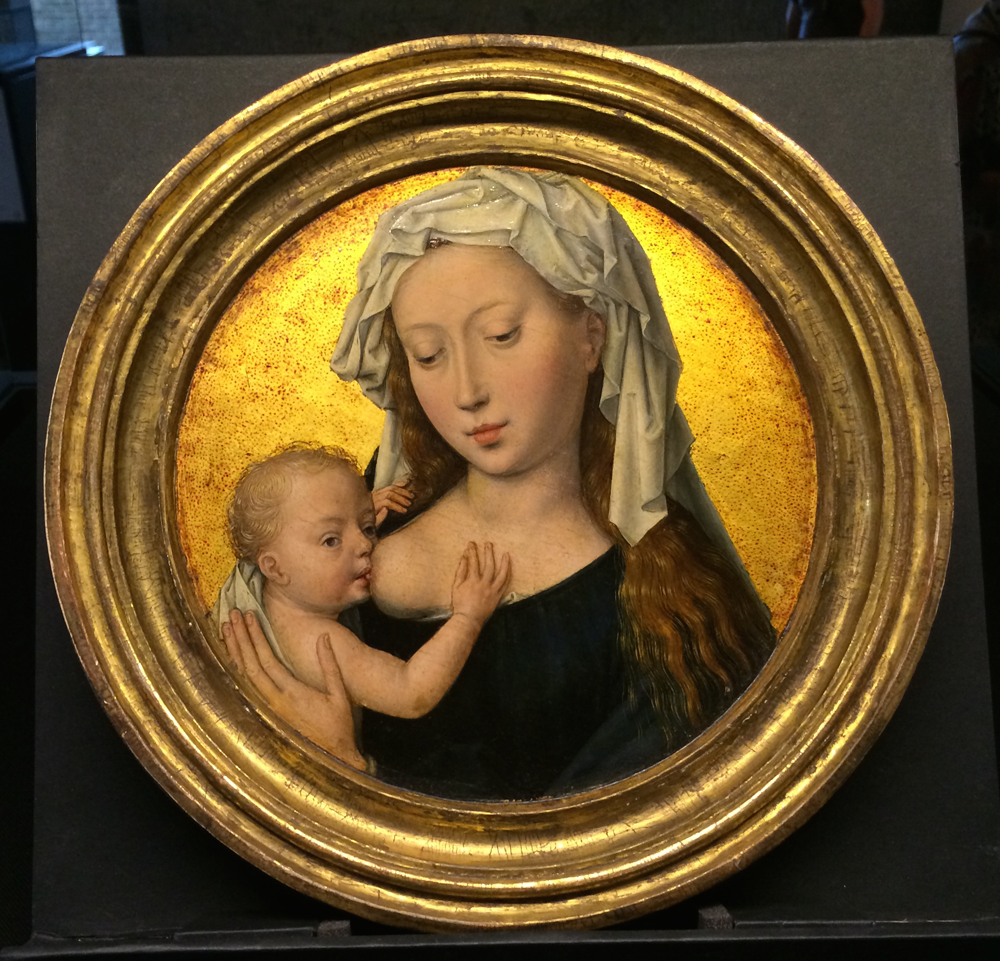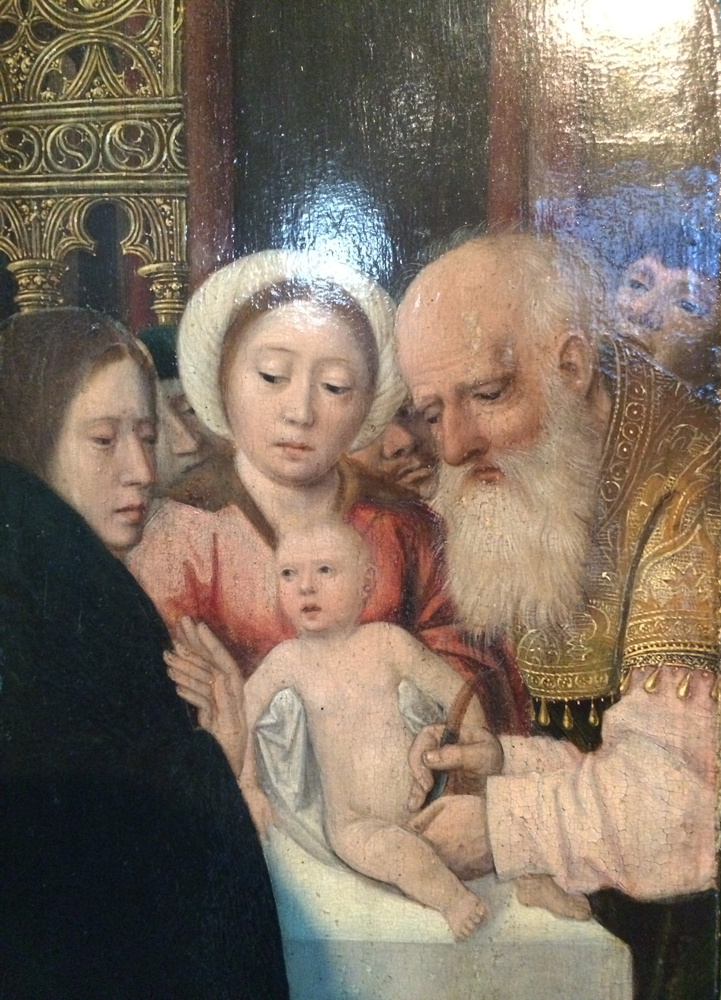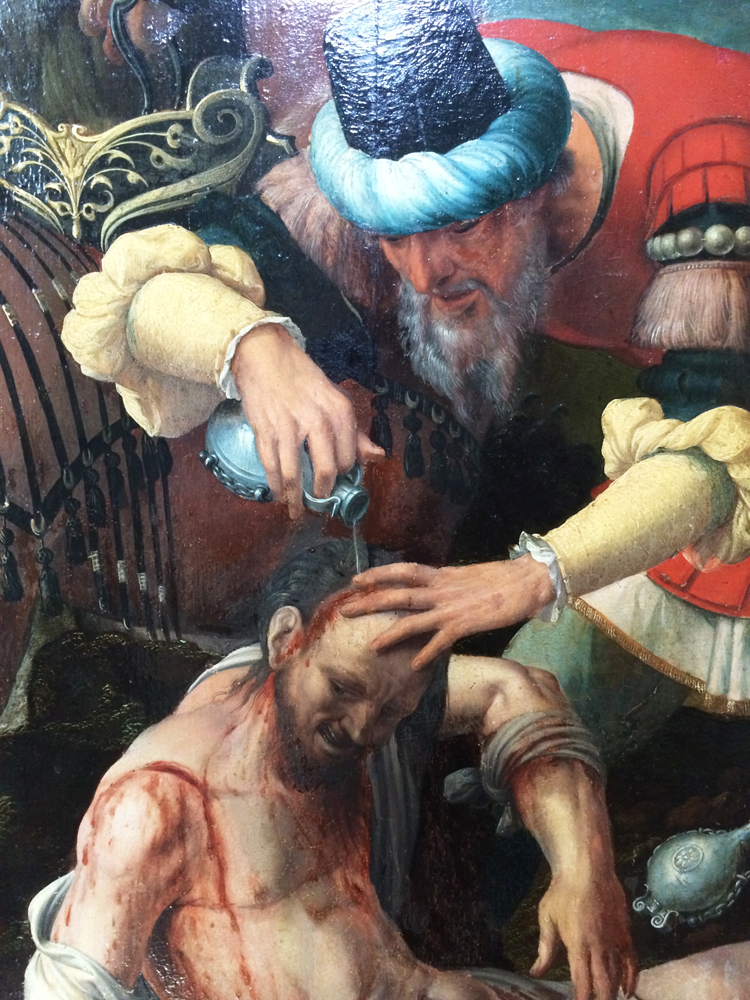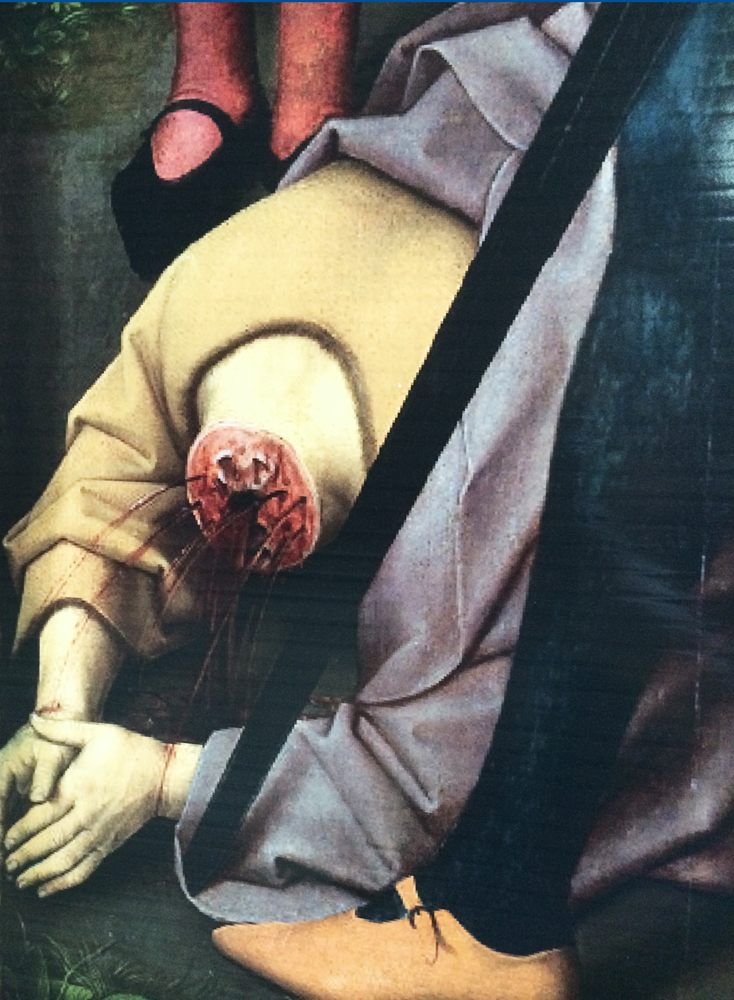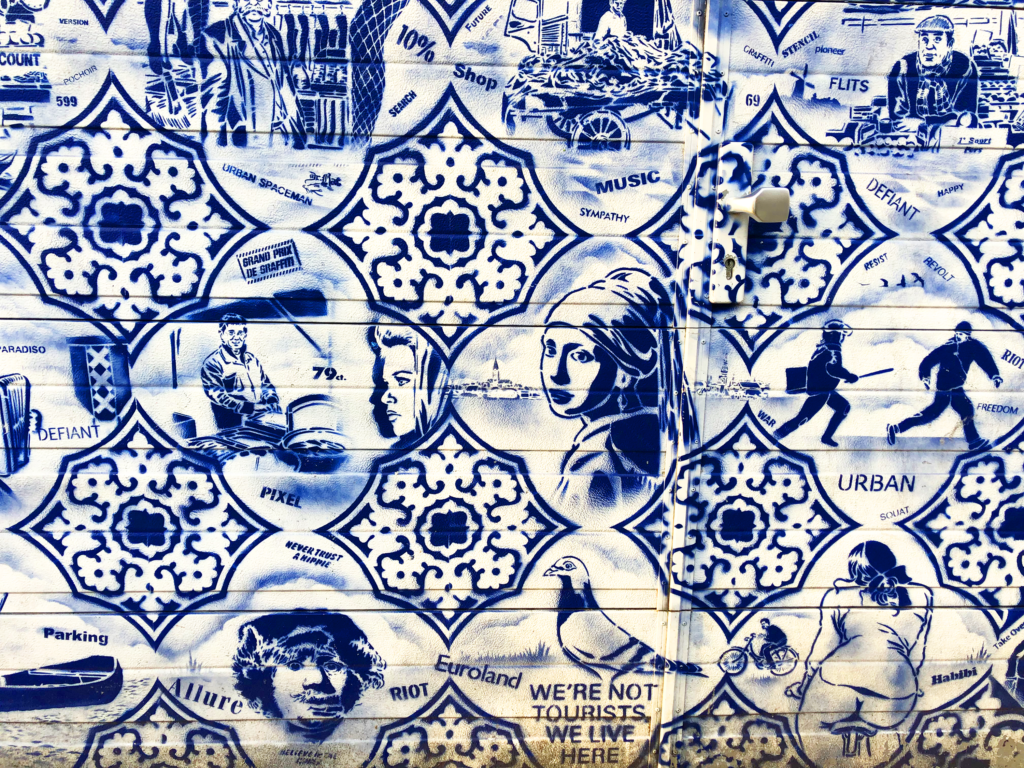
Here is the optimistic way to explain it:
Oh, you know, it’s actually really interesting and educational to have to do normal everyday things in a new country, even if they’re not exactly fun. Like going to get coffee or going to the grocery store, you know? So going to the pharmacy and being sick are another way to explore the culture.
All of that is true. And it’s thanks to getting an ugly cold in Amsterdam that I’m now conversant in medical stereotypes about the Netherlands versus, say, Belgium. The latter is apparently the place to be for a cold; not only does Belgium have the good-shit OTC cold drugs (whereas Dutch OTC culture tells you to ride it out because that’s what healing is), but also apparently, if you bring your cold-plagued self to a Dutch doctor, it’s fairly likely that a medical professional will actually laugh in your disease-riddled face. Belgium, one presumes, would instead greet you with a sympathetic embrace. This is counter to my own more pedestrian experiences in Belgium, but one doesn’t get the spirit of an entire country when you visit it for four days.
I couldn’t get on a train to Belgium for cold medicine. I couldn’t do much of anything. I took it easy the week before Amsterdam because I thought I felt something incubating in my face; I kept waking up with a mild sore throat that felt like something more than just being thirsty. The incubation period ended a couple of days into the trip, conjured forth by interrupted sleep, period fatigue, and shitty luck. It’s bad enough to saunter through a museum with a pocket full of damp, used tissues, knowing you’re that person whose snotting and coughing is echoing all the way to The Night Watch at the end of the gallery. Worse still is when it compounds into something more complicated, like a back that seizes up with every cough and sneeze.
Which mine did. It does that sometimes. Being a mortal meatbag has all sorts of fun surprises as you move through your life.
So I was a snot monster, and also my back hurt so much that walking – walking, my most favorite way to explore new places and just generally exist – was a grinding, exhausting, and sometimes excruciating act. I’d hobble home from a destination I got to only via sheer stubbornness and fall gratefully into bed, where I’d wedge a frozen bag of Albert Heijn peas under my lower back, pushed against my furious left QL. It radiated down over my hips to my quads, and the whole angry works felt like it was laced with little slivers of glass slid into muscles so tight I thought of timpanis tuning, of ratcheting straps into place for securing loads on trailers, of two kids playing tug-o-war with fruit leather. (Yes, I do try to make sense of pain with metaphor, welcome.)
I’m glad I went to Amsterdam. I like Amsterdam a lot. I’d like to go back again.
This was not a good trip to Amsterdam.
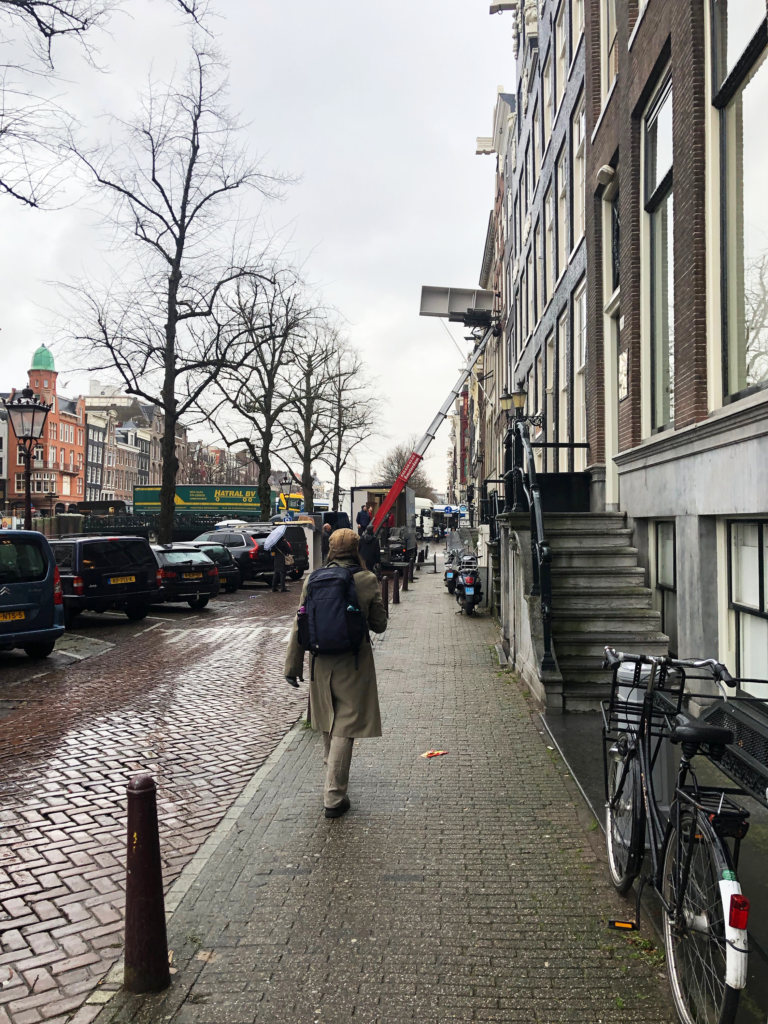
I had good food and nice beer. I saw beautiful houses and admired the canals. Amsterdam is an easy place to feel grateful to be alive – all uniqueness and culture collision and well-documented history. The many many layers that happen when people don’t pull down old things and instead adapt them, add plaques to document what happened there, and put the gleefully modern and beautifully old right on top of each other. And I was there in February, which meant we were safely away from the casual horrors of Black Peter season.
And I also spent so much time being so angry at my body, and feeling so wounded, because I was badly in need of a real vacation full of ease and discovery, where you come home refreshed and well rested, full of art and beauty, reawakened and ready to tackle your life with renewed excitement.
Instead, I literally limped home, and it took a week to begin to feel anything like myself again, part of which involved paying a skilled massage professional to put most of her weight onto my tense, angry muscles with her knees until said muscles finally began to remember how to release from a permanent state of rigidness.
If I had it to do again, I would get a massage in Amsterdam as soon as I started losing mobility in my core muscles. I’d go to the Rijksmuseum sooner (instead of going my second-to-last day there, determined to use the ticket I’d already bought on a more optimistic day). I’d stop feeling sorry for myself and seek out something local and medicinal that would help with pain and tension, at least at night. (I didn’t, and all I can say is that the idea of smoking and having a coughing fit was so terrible that I wouldn’t consider it. Yes, I know edibles exist. No, I was not in a space to carefully consider lots of options for anything.) And maybe then I might have made it to the Catboat, and rode a bike in North Amsterdam, and eaten even more herring sandwiches than I did, and walked the canals more.
Maybe.
Instead, I managed this:
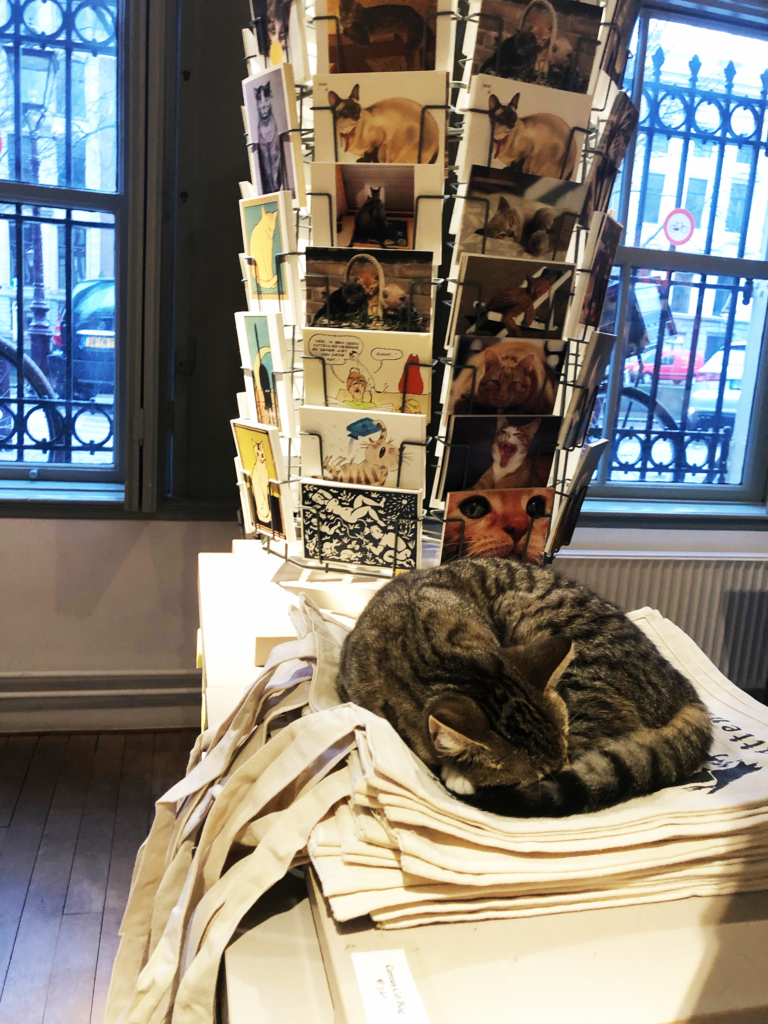
I went to Katten Kabinet early on, when the cold was just beginning to emerge but wasn’t yet a full-scale body-altering event. It is a wonderful, distinctive place worth visiting, most especially if you aren’t allergic to cats or sensitive to a mild but persistent smell of cat pee.
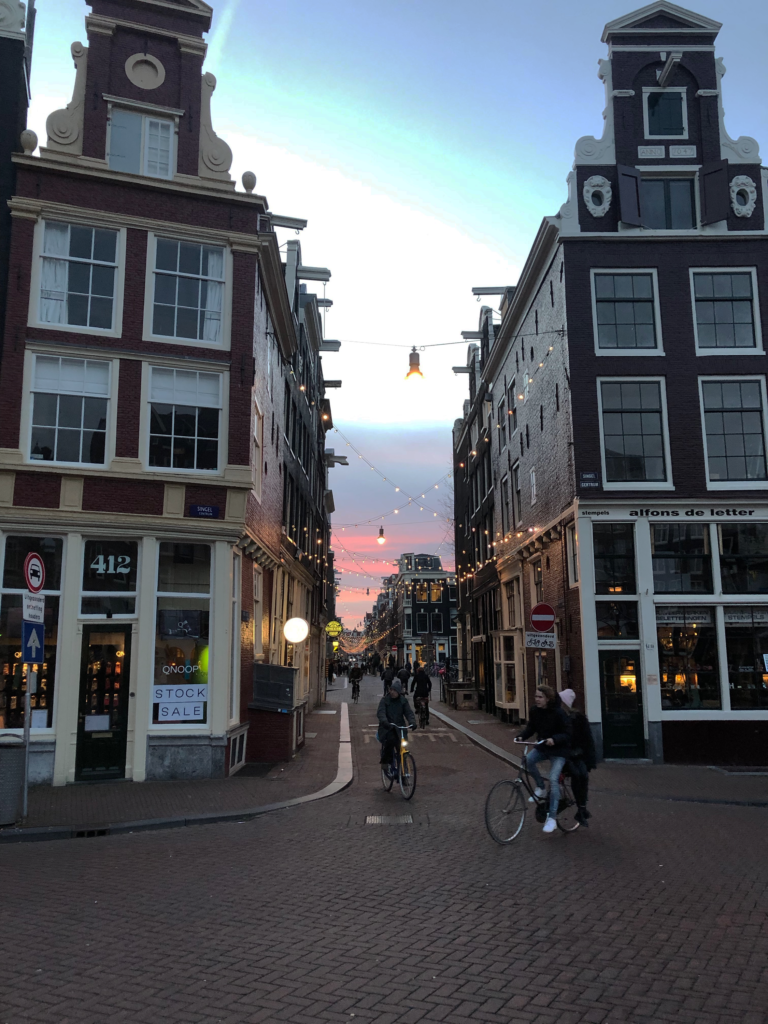
Because we stayed right in the middle of the Nine Little Streets area, I still got to see lots of beautiful canal houses and twinkly lights and clever shop windows. Unavoidably, I had to limp through those blocks to get to anything, and I became grateful in a new way that we worked hard to stay centrally.
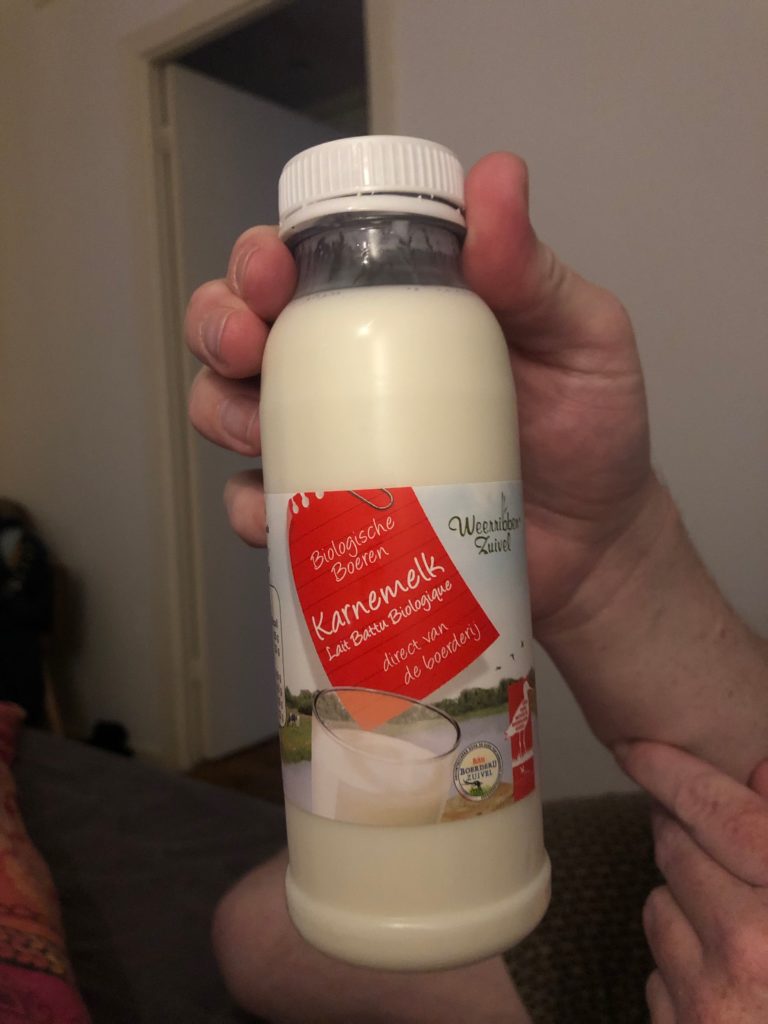
We discovered that Dutch folks drink buttermilk like other countries drink, well, not-buttermilk. We discovered this when the tea tasted funny after adding what we assumed was regular milk. Karnemelk is not what you are looking for, not for tea or anything other than scone-making, if you are almost any nationality that is not Dutch. We read up on why the buttermilk was featured so prominently at the grocery store and learned that it’s a popular pairing with a cheese sandwich for a dairylicious snack. I took a careful sip of it to try to understand, and I failed.
I was reminded that it’s a cycling paradise but that it makes it a little hazardous for pedestrians. I can’t imagine getting stoned outside in Amsterdam. I assume I’d end up tourist roadkill, and two additional cyclists would appear to kick whatever squishy debris was left. I was pleased to learn that mopeds and other motorized two-wheel vehicles were legislated out of bike lanes about six weeks after we were there. Better late than never.
I saw some wonderful art at FOAM, the Rijksmuseum, and (of course) the Van Gogh Museum. I saw old canal house wealth at the Van Loon Museum. I wish I could’ve gorged on two more museums, four, ten. But what I got to see was exquisite.
I got to walk through the Albert Cuyp Market, which was full of food and crafts and some of the more random stuff you see in certain markets (tube socks, cheap polyester clothes, a bunch of shampoo). On the way there, we stopped at a vintage store and had possibly the best experience either of us have ever had at such a place. My date is built in a way that’s pretty friendly for European sizing, but I expect iffy luck at vintage stores even in the US. But they had a ton of stuff that fit me, and I got a glorious Abba-looking dress, sold to me by an adorable woman who I hope gets as much pleasure out of all of her life as she seemed to be getting out of that particular day.
I felt shivers through my entire body at plaques indicating which Jewish people lived where and when they were deported and killed. I’ve seen the brass cobblestones indicating as much in Berlin but hadn’t seen them in Amsterdam last time I was there. It resonates even more terribly right now. I hadn’t known that was possible; it is.
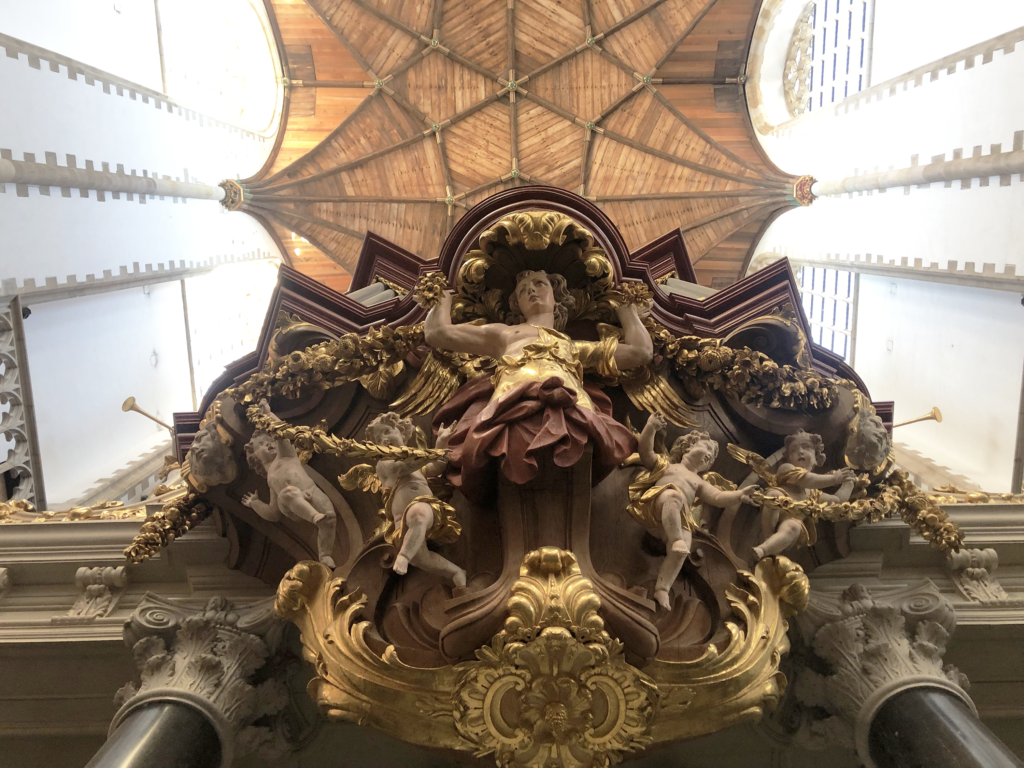
I stood in Corrie Ten Boom’s house and stepped into a recreation of the hiding place.
I ate rijstaffel and so many herring sandwiches. I went to a food hall and ate tiny exquisite cakes. I laid for many hours on my beloved bag of frozen peas, contemplating the diminishing returns many of us get in quality of life as we age.
You know. Light things.
In certain ways, alas, this was one of the hardest trips I’ve ever taken. I needed a break, and instead I hurt and hurt and hurt, and ugly alchemy turned some of my absolute favorite parts of being human into a slog, where my biggest, most important muscles stopped working in any predictable way.
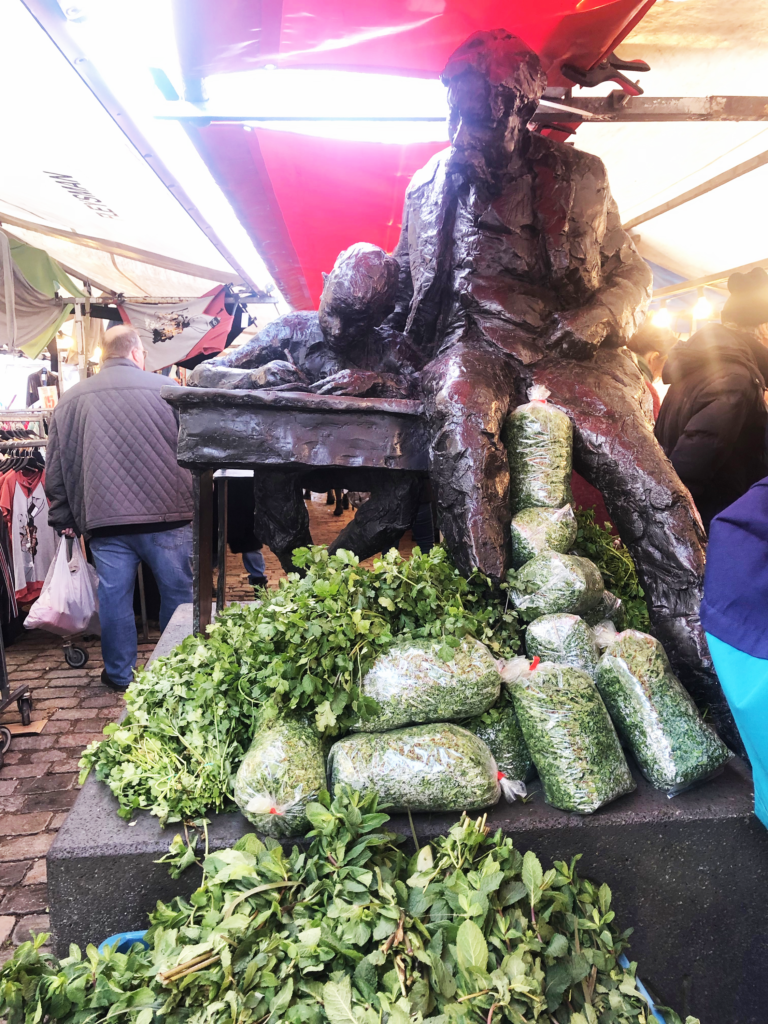
And also Amsterdam is always a good idea. A supportive partner who will go out and buy every cold remedy the pharmacy has can help. Sitting and using Google Translate on the packaging for no fewer than six different possible remedies can make even the darkest moment ludicrous enough to be funny. And narrow streets lined with beautiful and wonky old buildings can make even tentative, painful walks rewarding. One can’t help but emerge a little stronger after the particular conscious act of resilience that is taking a couple hours to sob and feel sorry for yourself — and then to resolve to get up, ask for help, and make the best of what you have.
I made it home. I think of the trip ruefully, but I don’t count it as a waste. I made the trip, and I braved some hard things, and I can still picture another life where I walk to work along a canal everyday, and I’m an even grumpier cyclist than I already am, with steely muscles from bumping along cobblestones like it isn’t any old thing.
So, even in pain, I got what I wanted: I saw beautiful things, I ate wonderful things, and I made it even easier to picture yet another version of what my life could be.
That’ll do.
